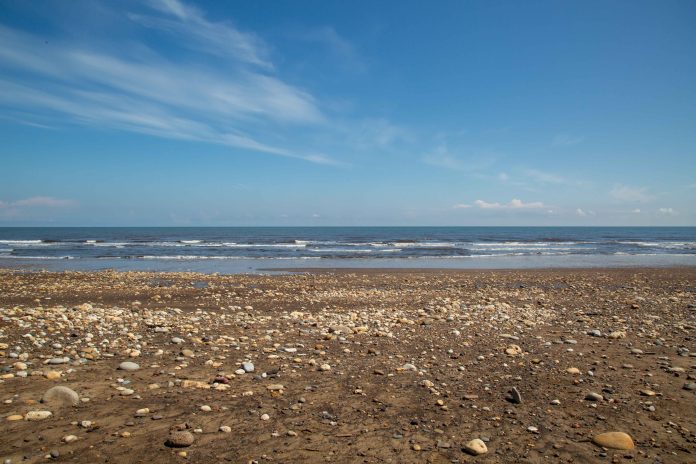How we care for our coastline is the heart of an exhibition created by a group of artists and young people from a former mining village.
Sea Change Lab brings together young people living in the coastal town of Horden, County Durham, and north-east based artists Jo Howell, Dawn Felicia Knox and Tracy Thomas.
Throughout May and June 2022, the group experimented with sustainable, low-cost filmmaking and animation, portraiture, analogue photographic printing techniques and zine-making to explore the question: How do we care for our coast?
The creative artworks that emerged from Sea Change Lab now form part of the Island exhibition at the Northern Gallery for Contemporary Art, based within the National Glass Centre (NGC), and on display until 11 September 2022.
Visitors will see the group’s hand-made publications, created using the cyanotype printing process, displayed in a glass case, an animated film is displayed on a screen above and there are a series of large images on the window panes above the gallery doors and in the NGC’s Glass Yard Cafe.
Sea Change Lab is commissioned by Seascapes CoLab and led by University of Sunderland. The project forms part of a public engagement programme delivered with coastal communities for the SeaScapes: From Tyne to Tees Shores and Seas marine heritage project, funded by the National Lottery Heritage Fund thanks the generosity of Lottery players.
Dr Suzy O’Hara, project curator and Lecturer in Digital Arts and Enterprise at the University of Sunderland, said: “Sea Change Lab equipped our young people with space to be curious and visual storytelling tools, enabling them to express their ideas about how we can better care for their natural environment and local coastline and protect it for generations to come.”
All the works were created with support from SeaScapes, Co/Lab Sunderland (University of Sunderland), Creative Youth Opportunities CIC, NEPN (North East Photography Network), Animated Ecologies and Sunderland Culture.
Michelle Harland, Director of Creative Youth Opportunities, said: “The whole experience has been amazing for members of our Horden group.
“They have thoroughly enjoyed working with the artists and alongside University of Sunderland staff, experimenting and trying new techniques but most of all seeing themselves and their work alongside that of professional artists was by far the highlight. Being able to bring their families to share in their achievements, for most of them this is huge!”
A short film has also been created by the group, documenting the process of the young people’s journey, available to view in the NGC gallery space.
The documentary charts how the young people begin their journey at Horden Welfare Centre, first exploring what words remind them of the coast and beach in Horden.
They then visit the Island exhibition and meet the exhibition’s curator, Jonathan Weston from Sunderland Culture. This is followed by a visit to Potato Garth beach in Sunderland, experimenting with different kinds of cameras before visiting Jo Howell’s artist studio to get our first taste of cyanotype printing.
During weekly labs at Horden Welfare Centre, the group explores what it means to live near our beach through portrait photography, film-making, book-making and experimenting with digital processes. They then consider how to share their stories and ideas by thinking about composition, light and background. They learn how to layer images with projectors and animate our photographs through stop-motion animation.
There is a visit and clean up at Horden beach with the SeaScapes Beach Care Officer, Louise Harrington, learning more about how rubbish from our towns pollute our coastline. Finally, during the last session, the group works together to decide on the pieces to be displayed in the gallery.
















